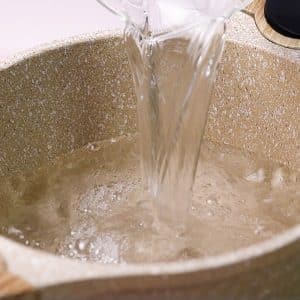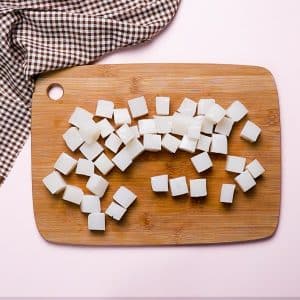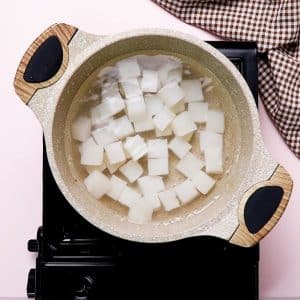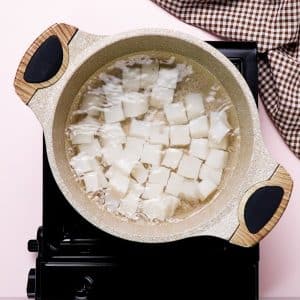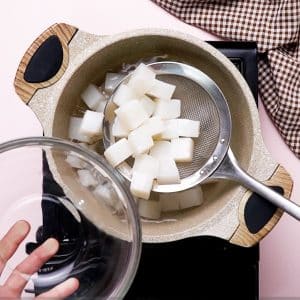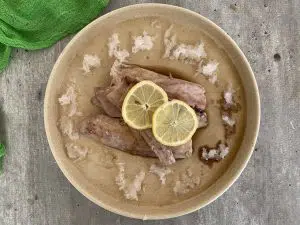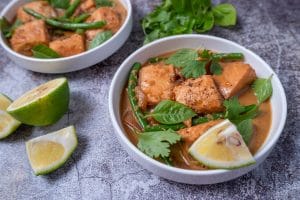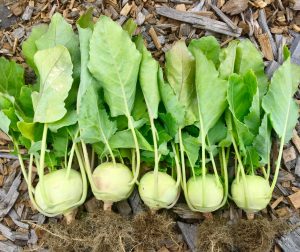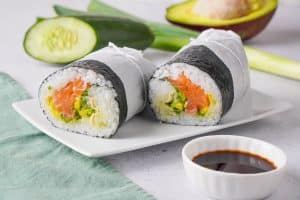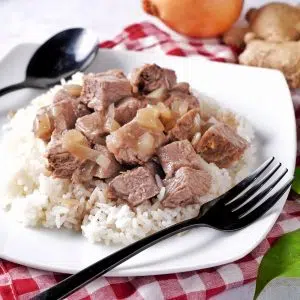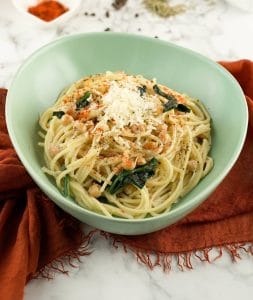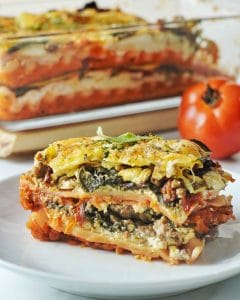Easy Konnyaku
Important Note: When you buy through our links, we may earn a commission. As an Amazon Associate we earn from qualifying purchases. Content, pricing, offers and availability are subject to change at any time - more info.

Ingredients
- 1 brick of konnyaku
- 1 cup water
Instructions
- Fill a medium pot over halfway with water and put over high heat. Bring to a boil.
- Cut the konnyaku into whatever size you want, usually cubes about an inch large. Alternatively, you can plop in the entire block.
- Add the konnyaku to the boiling water and wait for the water to return to a boil.
- Cook for 3 minutes then remove from heat.
- Drain the konnyaku or remove from the pot with a slotted spoon.
- You can immediately add it to whatever dish you are making or store it in the fridge until you are ready.
Nutrition
Konnyaku is a unique ingredient that has no real flavor of its own and has an interesting, chewy texture. Its lack of flavor means that it soaks up the taste of whatever you cook it in, similar to tofu. However, unlike tofu, konnyaku has very little nutritional assets and no protein, though it is very high in fiber. Below the main recipe, I will go into more detail about the plant konnyaku comes from, how it is made, and where you can find it.
Because konnyaku is so ambiguously bland and uniquely textured, it can be used in a wide variety of dishes. It has a super low-calorie content, so it won’t make a good meal on its own, but its special aspects mean it is a pleasant add-in to dishes that otherwise may need some texture variation or just need something to add bulk.
Notes & Tips
Boiled konnyaku can be stored in the liquid it came in. Konnyaku blocks generally come covered in a water-like liquid, so save it when you open the package. If kept with the original liquid, konnyaku can be stored in an airtight container in the fridge for up to a month. If you have already thrown away the original liquid, you can use regular water instead, but change it every few days. This method will allow the konnyaku to keep for up to 2 weeks.
Briefly boiling the konnyaku helps prepare it to add to other recipes and remove any accompanying odor. However, there are two ways to do this. The first is above and allows the konnyaku to be more gelatinous. The second method is done by adding the konnyaku to the pot with cold water and bringing it to a boil from there, then cooking at a boil for 3 minutes. That method results in a slightly firmer texture.
What Dishes To Put Konnyaku In?
Because konnyaku is so versatile, it can go in almost any dish, even ones that are not Asian. Because it is essentially flavorless, I always prefer to use it in dishes that require some sort of marinade or slow-cooking. This phnom penh noodle soup uses a lot of meat and vegetables that would work well with konnyaku. I would add the konnyaku as soon as you start cooking the meat. In this instance as well, you could substitute some of the meat for the konnyaku, so you can use the extra meat for a whole different dinner.
If you are interested in seeing how konnyaku does in a sweet dessert dish, you could try it out in this vegan blueberry cobbler. To get the most flavor into the konnyaku, I would chop it up into small, blueberry sized pieces and add it when cooking the filling. Konnyaku in blueberry cobbler means it will have a special, chewier texture and you will not need to use so many blueberries.
What is Konnyaku?
Konnyaku the food is a gelatinous-type cube made from a plant called konnyaku or konjac and is colloquially known as a potato, though it is not related to potatoes. The plant is related to taro, which you may already be familiar with as it is more popular. Taro is a purple root that is similar to a sweet potato. Konjac’s root looks a little bit less like a potato and more like an ugly radish. Konjac originated in China, but has spread across Asia and is now mostly found in Japanese and Korean cuisine.
Blocks of konnyaku are made by drying and powdering the konjac tuber and mixing with a coagulating agent to form a solid brick. There are two colors that konnyaku can come in: white or grey/darker color. The darker colored konnyaku has has seaweed powder added. The seaweed powder does very little to affect the flavor or consistency of the konnyaku, but it does make the color a bit deeper.
There are a few different ways you can find konnyaku as well and it can be used in a myriad of ways from savory to sweet. Konnyaku can be made into shirataki, which looks like noodles but has all the bouncy texture of konnyaku. You can also find it as sashimi, which can (and should) be eaten raw and is often served alongside wasabi and soy sauce, though it can be served the same way as regular sashimi and with any sides that accompany it.
Where To Find Konnyaku
Konnyaku is a unique ingredient, so you will not find it in your local grocery store. Instead, search where your closest Asian market is and try looking there. If you have country specific markets near you, a Japanese shop is the first place you should check. Depending on how large the stores are, you may still not be able to find it. In that case, check online. Several Asian supermarkets offer home-delivery options, or you could look on amazon, which often has a variety of food items.
If you try looking for konnyaku but cannot find it, consider revising your search to look for “yam cake.” While konnyaku is technically not a yam, it is often sold under that name. I have noticed during my own konnyaku search that is easier to find shirataki noodles rather than the konnyaku that comes in a block, which can pose a problem. Keep that in mind as you meal plan, because this ingredient is not something that you can usually just go out and get.

